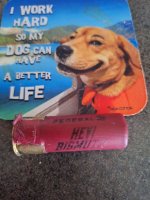John Singer
Well-known member
Never understood the issue with going away shots, they present the largest target area for vital hits. Only a problem if you are shooting behind.
The following is from the article linked in post #23. It is well worth a full read.
Anatomical Challenges
Necropsies of pheasants taken in the
test discovered that the back end of a pheasant presents two obstacles a charge of shot must overcome to produce a clean kill. Inside the body cavity is the gizzard, a large dense muscle filled with "sand" that Roster says ...is a great stopper of shot."
On a typical going-away pheasant shot, a pellet must penetrate the massive giz zard to reach the heart and lung area. As shooting distance increases, the gizzard is more likely to stop pellets. A gizzard pre sents the same obstacle for duck and goose hunters, but few of their shots are at birds going straight away.
Add to the gizzard the fine, hair-like underfeathers of a rooster's tail end. "One of the great lessons we learned from
doing this test," Roster commented, "is that there's a much higher rate of feathers that get balled up around pellets trying to penetrate a pheasant, than we were ever able to notice with waterfowl."
Known scientifically as the abdominal and dorsopelvic feather tracts, these feathers at the extreme rear of a pheasant were frequently found to ball up or wrap around pellets as they punctured the skin, and to significantly impede that pellet's ability to penetrate. The feather-balling problem was most prevalent in No. 6 steel shot, affecting well over 50 percent of pellets in bagged birds. No. 4 steel had slightly less feather-balling than 6s, while No. 2 steel was found to have significantly lower occurrence.
Last edited:

